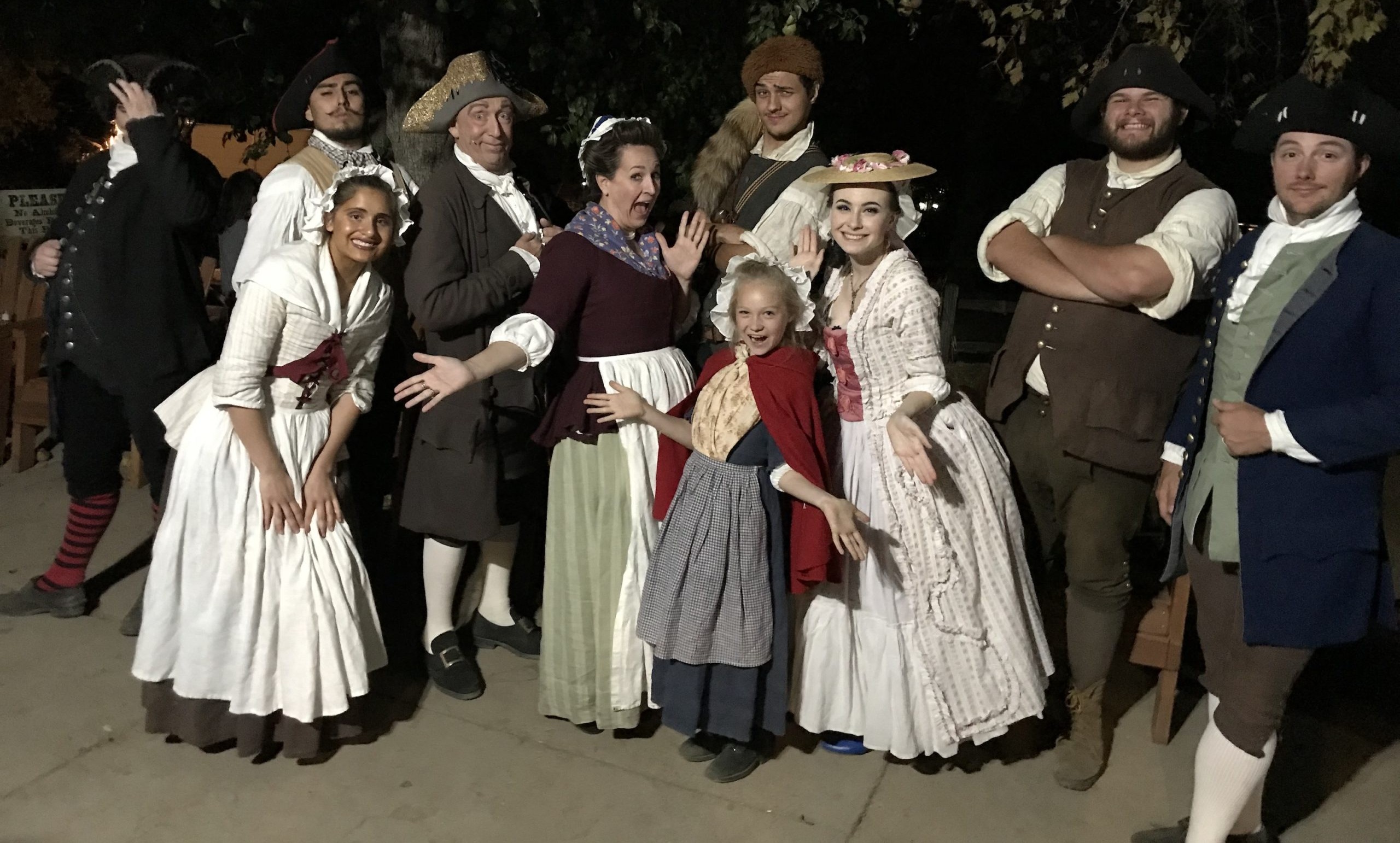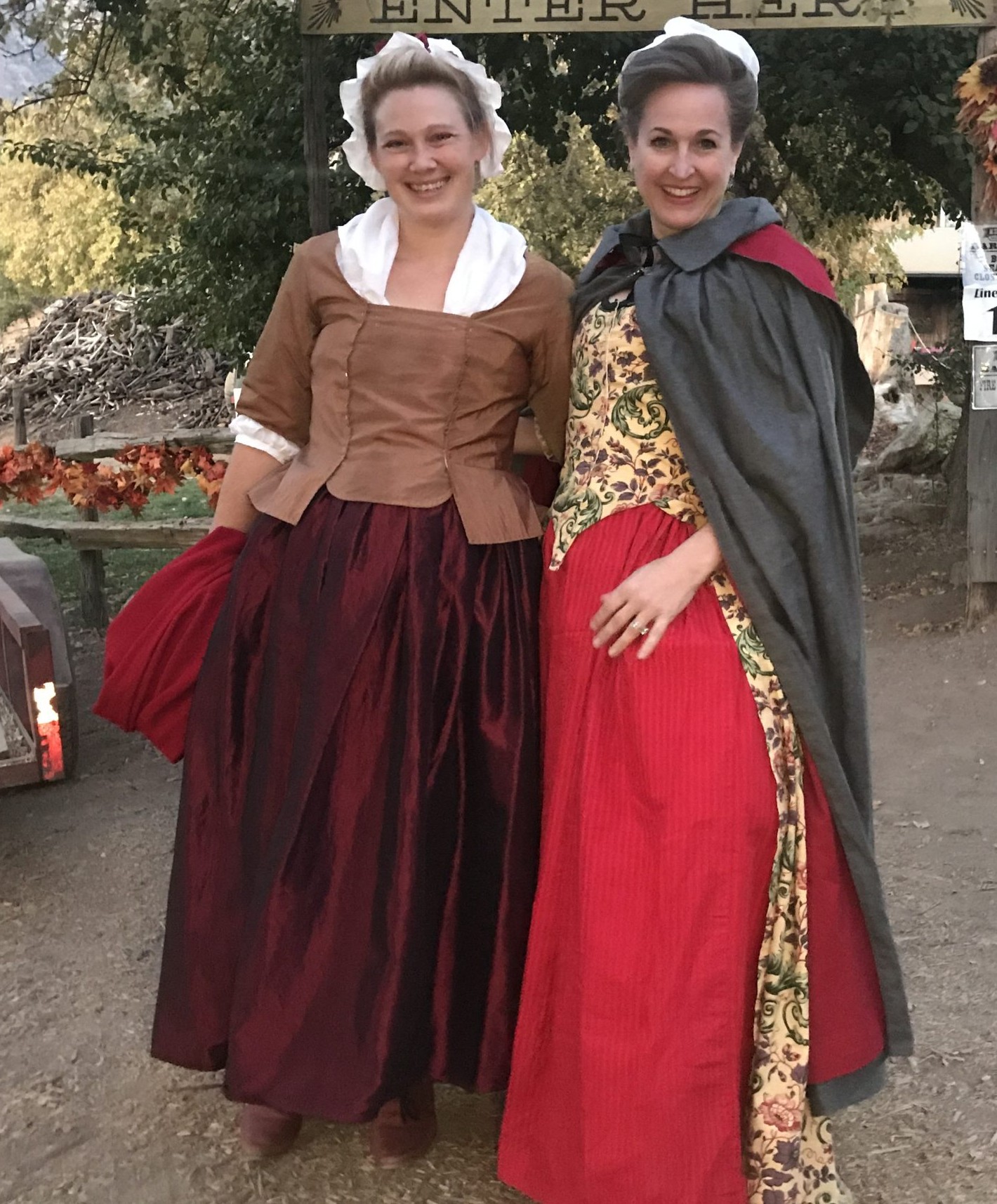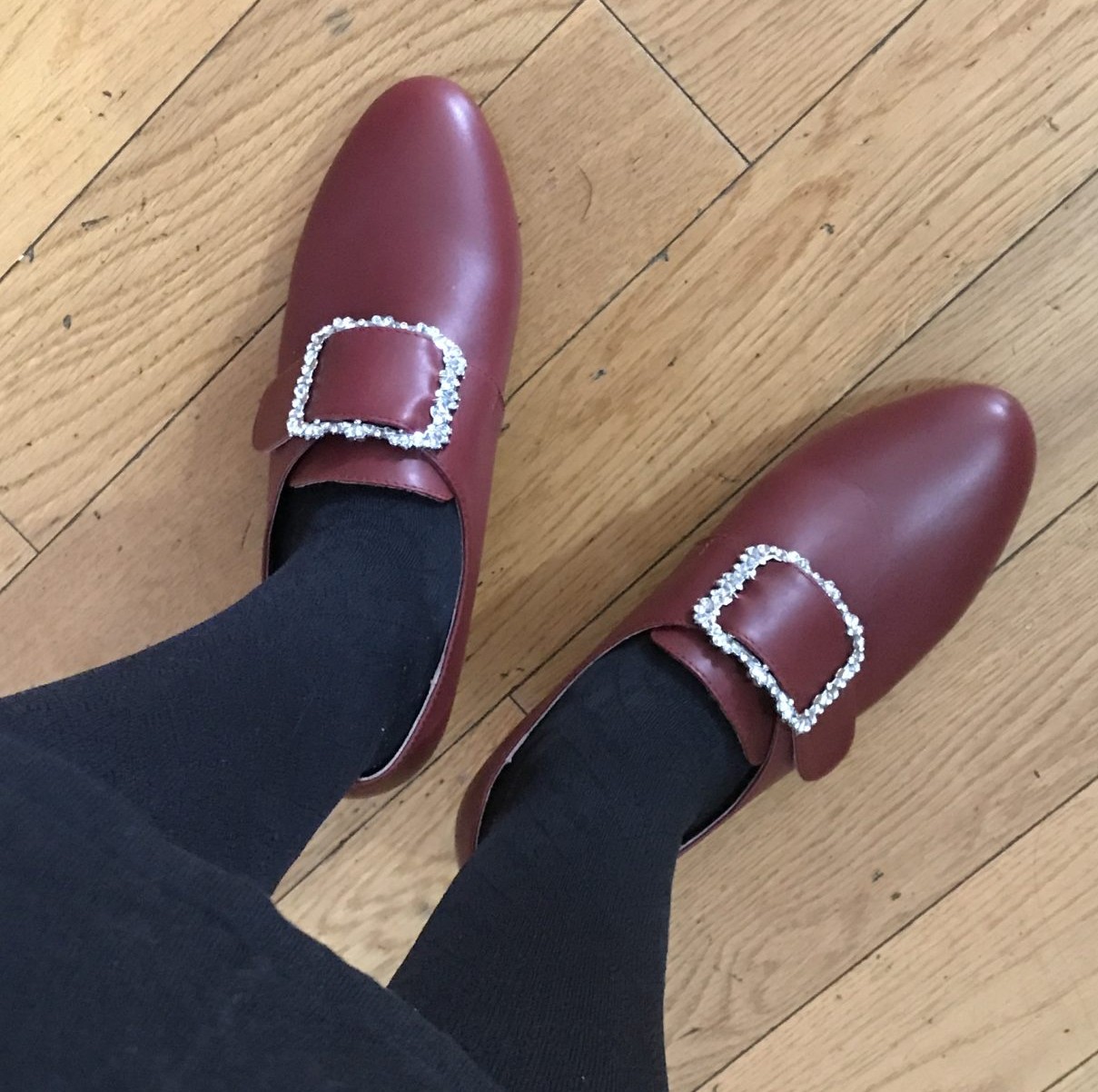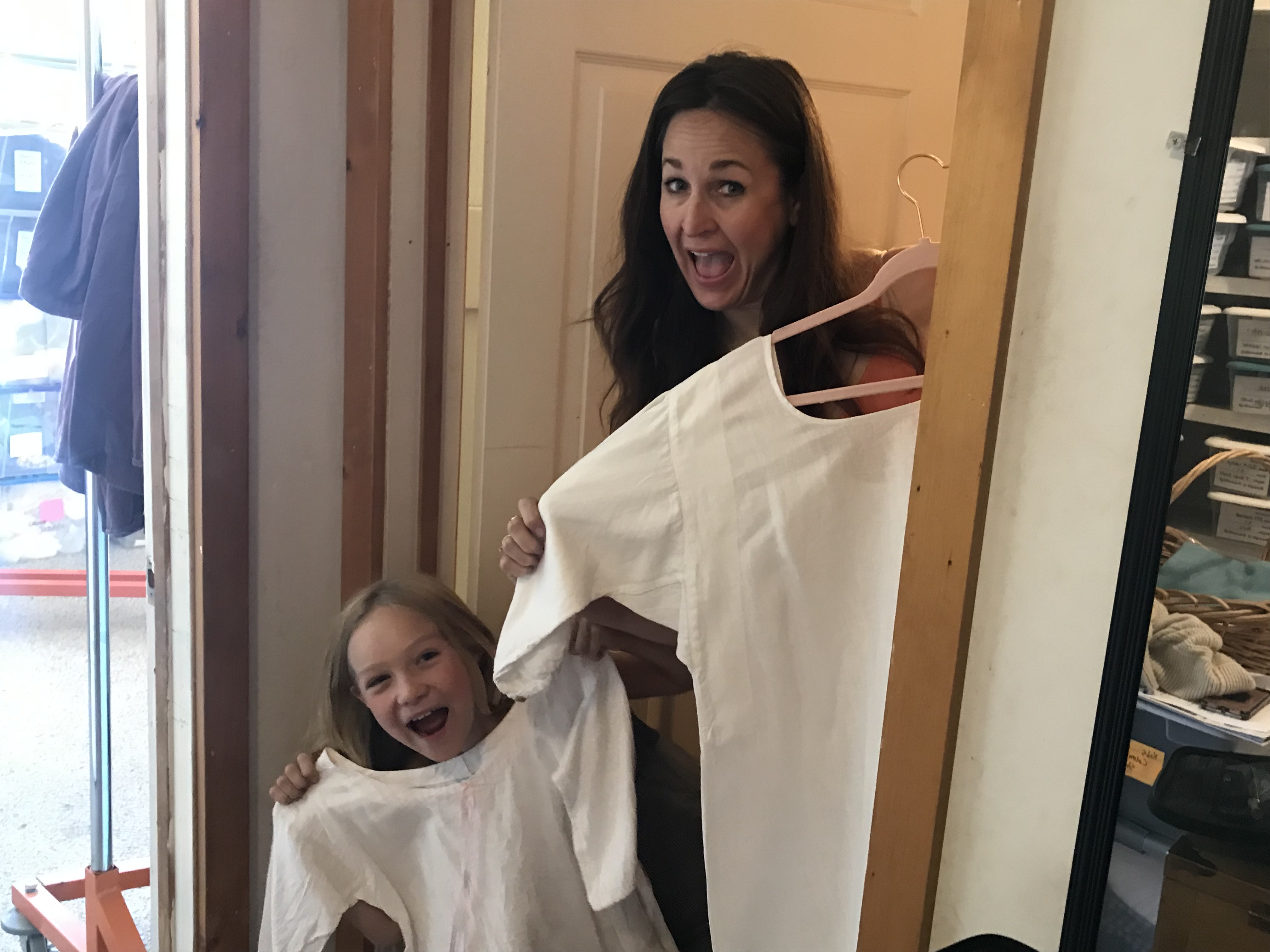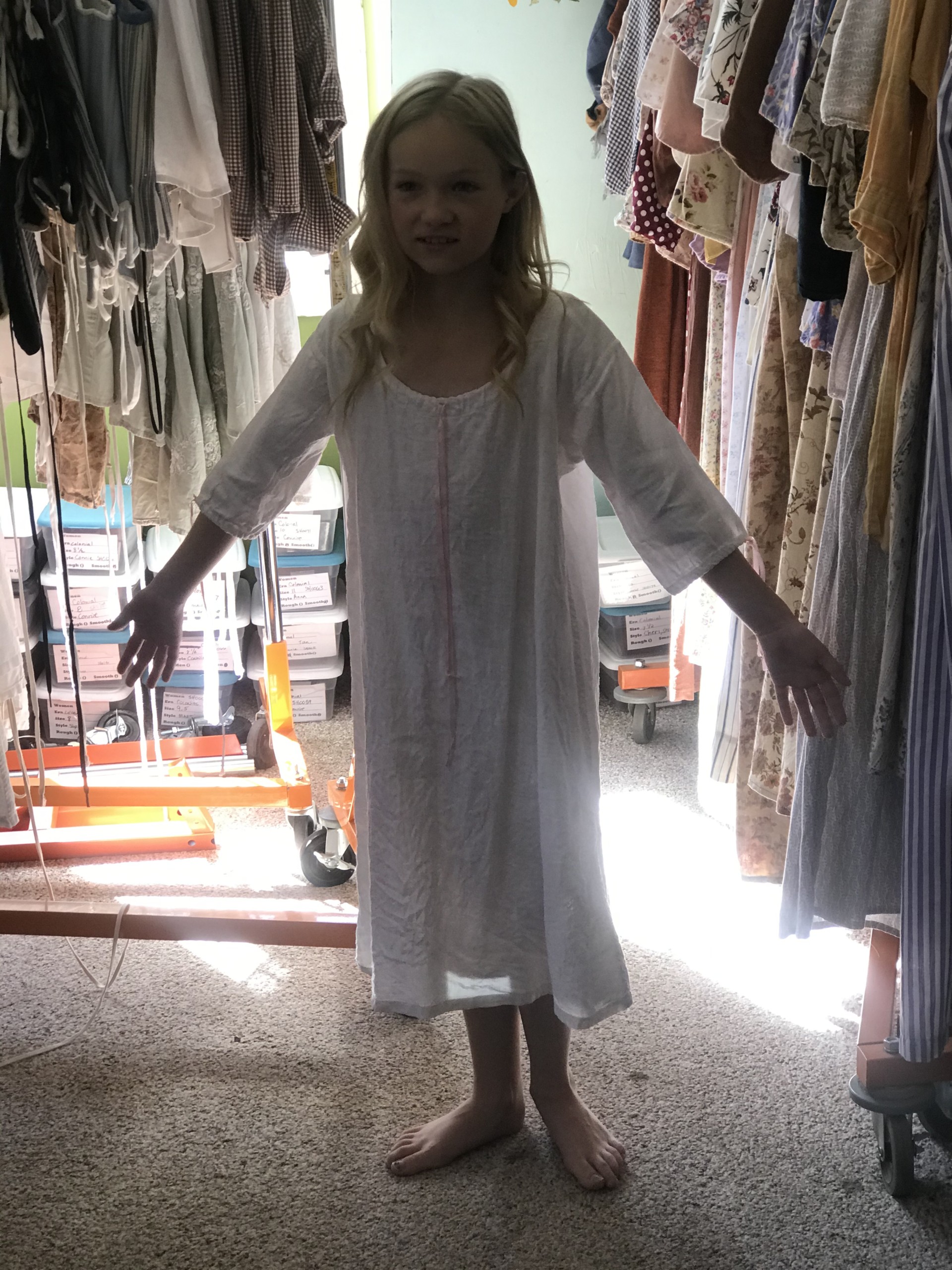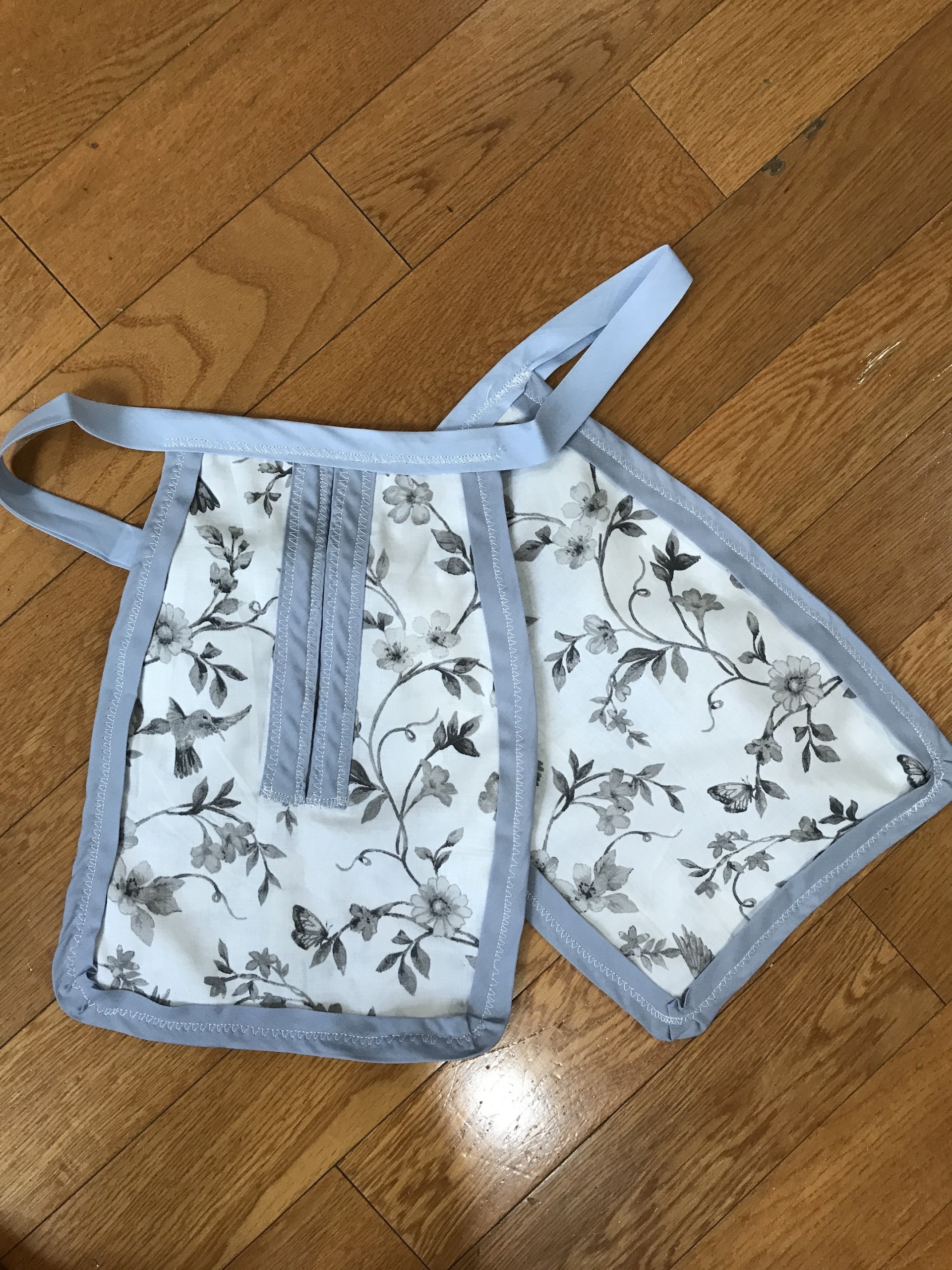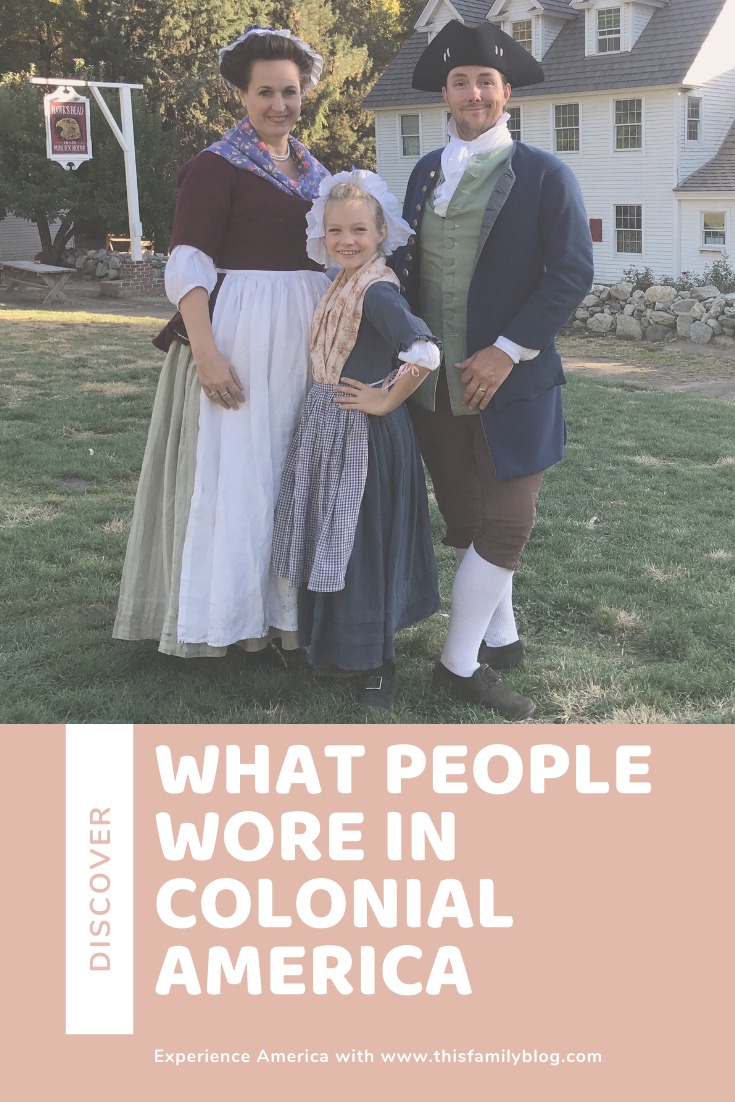Otherwise titles Colonial Clothing 101.
What DID people wear in the 1700’s? Do we even know? The answer is YES! We actually know quite a lot about what our forefolk (forefathers and foremothers) were wearing.
Colonial clothing is interesting. It is fashionable and functional. What’s interesting is that different social status is displayed not in different fashion choices but the quality of the fabric. It gets even more interesting because you might think silk would be an indication of wealth but a fine printed cotton might be worth more.
This is just the tip of the iceberg. Colonial clothing is fascinating but let’s do a brief overview and then get to the video!
What did Colonial Men wear
Short answer for men’s colonial clothing? Breeches, a shirt, a waistcoat, and a coat. Top with a cravat and a tricorne hat, add stockings and shoes and voila!
Now the quality of the material is what counts and where you would see wealth. The shirt was ridiculously long and acted as a shift (see colonial underwear)
It should be mentioned here that the term waistcoats can be very confusing to us modern folks. It’s a vest. A long fitted, stylish vest. This waistcoast could be wool, silk, decorated, or plain. Want examples? Thomas Jefferson wore fancy ones. Worker bees like the tradesmen did not.
Discover The Art of the Colonial Blacksmith
A Word on Wigs
Sometimes I think we have this notion that everyone wore these white powdered wigs all the time. Well, there were wigs but not everyone wore them, and not all the time.
But you can’t talk colonial clothing without a word on wigs.
Wigs were generally a wealthy guy thing and they were based on the job. Think of it this way, the more important the job, the bigger the wig. Ever hear the term ‘Big Wig’?
I know…my mind was blown when I figured it out too…
Now think about all those movies you’ve watched. Where are the big wigs? lawyers, judges, statesmen, and Kings… Yup. You just learned something.
This Family Blog Amazon Store with costumes and wigs
What did Colonial Women wear
The short answers? For women, colonial clothing was all about layers! Shift and stockings, bum roll, stays, petticoat, maybe another petticoat if it’s cold, jacket or gown, apron, and top it off with a cap!
As with modern life, the exact outfit would be based on the activities of the day or evening and the social status. That is to say Martha Washington preparing to host a dinner would not wear the same thing as a farming wife headed out to do chores.
The styles however, were pretty standard. The variance came in what fabric was used. Wool, cotton, linen, silk…these were the basics. The colors and the patterns were varied. Scroll down to watch Sage get dressed and see all the layers.
What did Colonial Children wear
It’s not a big surprise that kids in the 1700’s wore miniature versions of what their parents wore. There was no ‘teenager’. You were a kid, then you learned how to grow up, and then you were an adult. You know how 3/4 of any given shopping mall is dedicated to teenage trends? Yeah, that wasn’t a thing.
Kids started dressing like little adults about age 5 or 6.
But there were a couple of differences in colonial clothing for kiddos. Young girls did tend to wear jumps instead of stays. (Don’t confuse either one with a corset). Stays did have some boning in them but they weren’t meant to train a body to grow a certain way. Stays simply held everything in place where it should be and gave a smooth silhouette.
Jumps then, were a softer version of stays without as much boning because kids do things like climb trees and run across fields. Meant for smooth silhouette and help with posture.
I have to say, us girls enjoy wearing stays. I feel put together in them. They are comfortable and I feel very ladylike. They are kind of like Spanx but with a little more structure. So smooth, but also will prevent slouching in chairs. Stays = Colonial Spanx
More Historical Costumes
Colonial Underwear
People in the 1700’s didn’t have underwear, at least not in the way we think of underwear today. Now before you get all grossed out, they did have undergarments or underpinnings. Everyone wore a shift so people had multiple shifts. They wore them under their clothes and often as jammies.
They were lightweight, usually made of cotton or linen and protected the other clothing from dirt and body odor and kept all the outside stuff from getting onto the skin.
I’ve worn both and I have thoughts. A cotton shift is literally the most comfortable thing to wear. EVER! It’s great to wear to bed…soft, comfy…airy. It doesn’t bunch up. HOWEVER on a hot day, in full colonial garb, linen is the way to go. It wicks away the sweat and the heat and it is surprisingly lovely in all temperatures.
Colonial Pockets: The Greatest Invention in all of Fashion…Ever!
Why did this fashion trend die out?!?! Colonial pockets are the best thing in the world and my favorite part of colonial clothing! They are huge and practical….and HIDDEN!!!! I can fit a wallet, lip saver, glasses, keys, and cell phone in them and you will never see any of them!
You know how your jeans wear weird because of jamming a cell phone in the back pocket all the time? Not a problem with colonial pockets!
Because colonists like to empahasize things like hips, most outfits have some kind of panier or bum roll going on. The way the petticoats drape over them provides an entire area that you can fill with your giant pockets!
BOOM! Everything you need is with you and you don’t need a purse or a bag. Perfect for events and you know, running away from the British at a moment’s notice.
Can somebody please call Ralph Lauren and bring these back into style?!?! They are my absolute favorite thing!!
Colonial Clothes Never Die
In Colonial times, everything was done by hand so nothing was taken for granted. This meant that clothing was not thrown out when you grew out of it or it went out of style. If you outgrew a garment, it was passed on to someone smaller or turned into work clothes or perhaps quilt pieces or if it was really bad, even cleaning rags. If they were out of style, the clothes were simply changed.
What’s old is new again! Nothing wasted here!
Colonial families were thrifty and made the most out of what they had and what they wore.
Can you imagine not throwing out your clothes but either reusing or cycling up every single thing you own? Of course, they didn’t have nearly the size wardrobes we do today but still…go stand in front of your closet and stare at your clothes…it’s almost an overwhelming thought but what you learn real quick is that certain kinds of clothes wear longer than others and some are just plain useless.
So it’s no surprise that colonial families were particular about the textiles they used. Sturdy = good.
Sage Visits a Historical Costumer and Gets Dressed as a Colonial Girl head to toe
Sage takes a trip to Riley’s Farm to learn from Mary who is the head customer for all the workers and performers. See everything she learned about colonial clothing and watch her transform here:
See All the Colonial Crafts
What is Riley’s Farm
Riley’s Farm is a living history farm in Southern California. It specializes in bringing Colonial Era and early pioneer farm life…to life! They do it in a variety of ways. There are school tours, special events and fairs, colonial tavern and old world experiences (like hatchet throwing and candle dipping) and my favorite, the dinner theaters, complete with hay rides and interactive activities!
The American Tradition of Dinner Theatre
The Hawkshead Tavern is the first thing you see when you arrive at their property. It has great colonial faire. I recommend the cider, both regular and hard for the grown ups. It’s an immersive experience very unique on the West coast. Not sure what is so fab about a colonial tavern? HA! We have you covered!
Taverns: The Heart of the American Experience
Eighteenth Century Beauty
Sage and the family have done quite a bit of research in the area of historical beauty, particularly in the colonial era. As a grand experiment, we started making our own products and using them. Gotta say, I’m a big fan of colonial pomade and powder. When used correctly, the combination of the two items replaces shampoo, conditioner, hairspray and virtually every other modern hair product. It’s kind of amazing really.
Sage & Folly has pomade and powder available in a couple of different ‘flavors’. The mareschal smells AMAZING! Like holiday baking!!! It takes three weeks to make because it’s a recipe from 1772! HOW AWESOME IS THAT?!?! She also has hard pomade for those pesky fly aways, liquid rouge (which I thought I’d hate but actually really like-that takes two weeks to make) and tinted lip salve. She also has a pretty great eyelash growing serum based on recipes that actually predate colonial. None the less, it’s historically accurate. If beauty in the colonial era intrigues you, it’s actually rather fascinating since everything was natural. Have a peek!
Visit Sage & Folly Historical Apothecary
Disclaimer: As in every era there were some odd and somewhat dangerous and even gross beauty practices but the best way I can describe those is like this:
Lead based white paint for the face is dangerous. Did they know it then? Yes. Did some people still do it? Yes. Think of it like botox and heavy plastic surgery today. Is it dangerous? Yes. Do some people still do it? Yes. But I have to say… Using mouse hair on your eyebrows is just gross. I just can’t get over that one. Blech!!!
Thankfully these extreme fashion choices weren’t really the norm here in America, think of those trends like modern runway trends. Make sense? So those photos of people super done up with crazy high hair and white faces and beauty marks and such… yes they happened, probably not to the extreme we characterize them today, and that type of thing was seen more in French Court where EVERYTHING was extreme . The American colonists were a wee more practical and most likely working farms so beauty standards were simply not as extreme. None the less take a few minutes to look at the fun products and learn how they were made and why. It’s really interesting.
If you want to make your own eighteenth century wardrobe there are several companies out there specializing in both patterns and fabric. Now, if you want to make colonial clothing by hand, that is truly authentic as sewing machines haven’t come around for almost another hundred years. But using a sewing machine for beginners helps the projects go much faster. 🙂
Pin It for Later!
Come back to it again and again! Pick your pins!
Signup
Did you have fun learning a bit? Join our mailing list. We explore America through travel and through creative ways like this and pass on all the knowledge to you! Whether you watch colonial crafts or use one of our fun itineraries to explore a new place, you’ll learn a little, and have a lot of fun!

